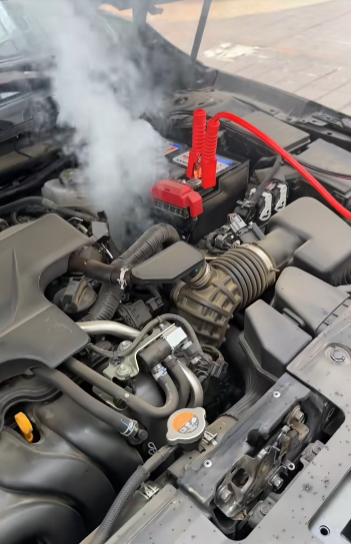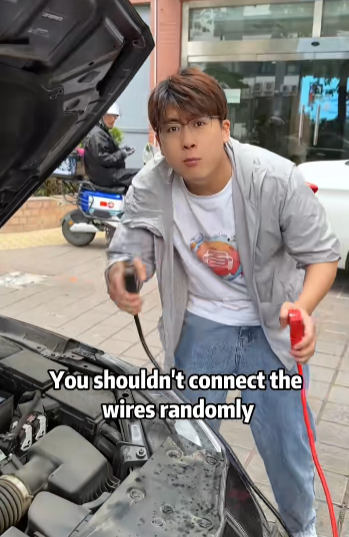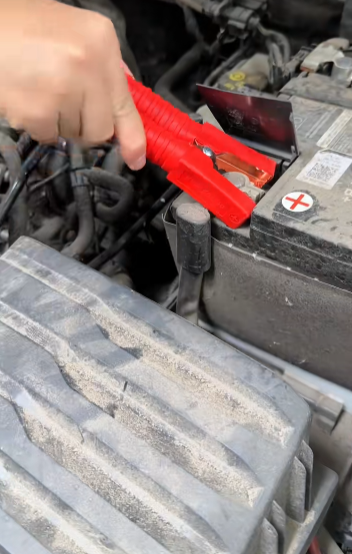
When it comes to cars, most people think about speed, comfort, or maybe even the latest tech inside. But very few realize how much magic happens behind the scenes — in the circuits that bring everything to life. In fact, about 99% of people have no idea how to properly connect car circuits! It’s not just a fun fact — it’s a serious issue, especially if you ever find yourself needing to fix something on your own.
Why are car circuits so important? Think of the human nervous system. Without it, you couldn’t move, breathe, or feel anything. In the same way, a car’s wiring and circuits are what make everything work: from starting the engine to rolling down a window to turning on the headlights at night. Without circuits, your car is just a giant, lifeless piece of metal.
And yet, despite being so important, very few people ever take the time to learn even the basics. Let’s break it down and see why understanding car circuits is not just helpful — it’s essential.

Understanding the Basics
A car’s electrical system is made up of a few main parts: the battery, the alternator, and various wiring circuits. The battery stores electricity and powers the car when the engine is off. The alternator charges the battery and powers the electrical systems while the engine is running.
Every feature you love in your car — the stereo, the GPS, the seat heaters — is powered by electricity traveling through circuits. These circuits have switches, fuses, relays, and wiring that all need to be properly connected to work safely.
A simple car circuit works like this:
- Power Source: The battery or alternator.
- Switch: Turns the circuit on or off (like a headlight switch).
- Load: The device that uses electricity (like the bulb inside a headlight).
- Ground: A return path for electricity back to the battery.
Miss one of these elements or connect them wrong, and at best, things won’t work. At worst, you might cause a fire or damage the car’s computer systems!

Why Most People Struggle
Most people are afraid of electricity. And it’s understandable! Electricity is invisible, it can cause shocks, and mistakes can be expensive. Plus, cars are getting more complicated every year. Modern vehicles have miles of wiring and hundreds of sensors.
Even basic repairs like installing a new stereo or fixing a tail light can seem overwhelming because:
- Wires look confusing: Red, black, yellow, blue…what do they all mean?
- Diagrams are complicated: Electrical schematics can look like alien language.
- Fear of mistakes: One wrong connection can blow a fuse — or worse.
Schools don’t usually teach electrical skills unless you take a specialized course, so unless you grew up tinkering with cars, you probably never learned.
Common Mistakes People Make
When people try to connect car circuits without knowledge, a few mistakes happen over and over:
- Using the wrong wire gauge: Thin wires for heavy loads can overheat and catch fire.
- Skipping fuses: Fuses protect your car from electrical surges. Skipping them is dangerous.
- Bad grounding: Poor ground connections cause circuits to behave strangely or not work at all.
- Mixing up positive and negative wires: This can instantly damage electrical components.
- Poor connections: Using tape instead of proper connectors can cause shorts over time.
It’s not that people are lazy. It’s that no one ever showed them how.

The Right Way to Connect Car Circuits
It’s not as hard as it looks once you know the rules. Here’s a basic checklist for connecting a simple car circuit safely:
- Plan the circuit first. Draw it out. Know where the power source, switch, load, and ground will be.
- Use the right wire size. Thicker wires for higher current devices.
- Include a fuse. Always put a fuse close to the power source.
- Use proper connectors. Crimped connectors, soldered joints, or waterproof terminals are best.
- Secure the wiring. Use zip ties or wire loom to prevent wires from rubbing and wearing out.
- Double-check polarity. Positive to positive, negative to negative.
- Test before final installation. Use a multimeter to check voltage and continuity.
Why You Should Care
You might be thinking: “I’ll just let my mechanic handle it.” And sure, for major repairs, that’s smart. But there are a few reasons why learning basic car circuitry is a great idea:
- Save money: Mechanics charge a lot for even simple wiring jobs.
- Emergency skills: If your car’s lights go out on a road trip, you can fix it.
- Customization: Want to add a new stereo, dash cam, or LED lights? Knowing how to wire them opens up possibilities.
- Confidence: Understanding your car makes you less dependent and more confident behind the wheel.
Plus, it’s just cool to know how things work!

Where to Learn
If you’re ready to join the 1% who actually know how to connect car circuits, there are tons of resources:
- YouTube: Free tutorials for everything from simple repairs to advanced upgrades.
- Books: “Automotive Wiring and Electrical Systems” by Tony Candela is a great beginner-friendly book.
- Classes: Some community colleges offer automotive tech courses.
- Forums: Sites like Reddit’s r/Cartalk or car-specific forums have endless advice.
Start small. Maybe fix a simple broken taillight. Then move up to installing a new radio. Then maybe add some fog lights. Every project will build your skills.

Final Thoughts
Most people will never understand car circuits because they’re intimidated. But you don’t have to be. With a little bit of patience and learning, you can master the basics — and even do repairs and upgrades that save you hundreds or thousands of dollars.
The next time someone says “only mechanics know how to do that,” you can smile and know better.
Because now you know the secret: car circuits are not magic — they’re just another skill you can learn.
Don’t be part of the 99%.
Be the one who knows how to connect car circuits!



